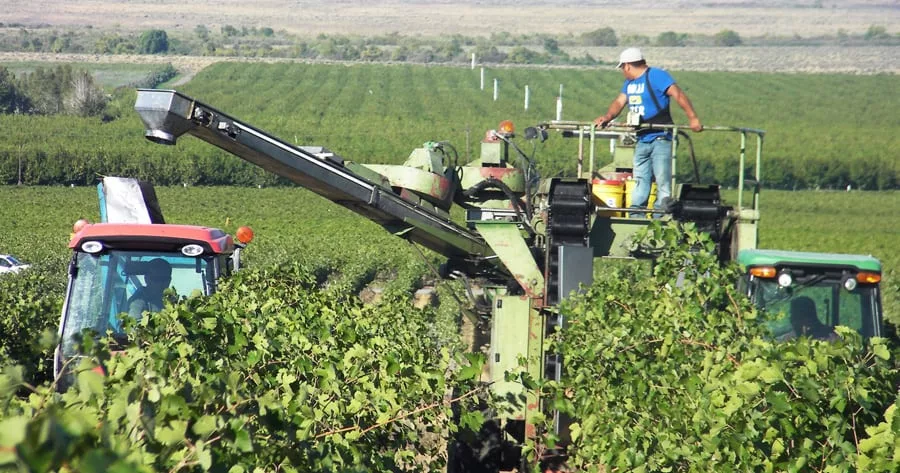
Home » Ste. Michelle drives growth of Washington wine industry
Ste. Michelle drives growth of Washington wine industry

October 14, 2016
By Wine News Service
We’ve known this all along: Ste. Michelle Wine Estates dominates the Washington wine landscape. But a look at the top wineries in the state drives the point home.
Of the top 10 wineries in the state for cases produced, Ste. Michelle owns the top six. On average, Ste. Michelle uses two out of every three grapes grown in Washington. Perhaps nowhere else in the world does one wine producer so dominate a region.
Here’s a look at the top 10 wineries in the state, along with their production:
- Chateau Ste. Michelle: 3,252,600 cases
- 14 Hands Winery: 1,847,700 cases
- Columbia Crest: 1,062,200 cases
- Two Vines: 610,000 cases
- Red Diamond: 433,000 cases
- Michelle: 158,100 cases
- Waterbrook: 141,408 cases
- Radius: 132,830 cases
- Canoe Ridge: 108,324 cases
- Snoqualmie: 105,000 cases
Of these top 10 wineries, two are not owned by Ste. Michelle: Waterbrook and Radius. These two are owned by Precept Wine in Seattle, which is the state’s second-largest producer.
Two Vines used to be a tier of Columbia Crest but has been sliced off as its own brand. It is Ste. Michelle’s lowest-tiered wine, often selling for $6 per bottle. Some of the grapes for Two Vines come from California’s Central Valley — primarily because Washington has all but run out of red wine grapes.
Red Diamond is a brand you might not have seen much of. It’s primarily for restaurants, and it uses grapes from all of the world, including Washington.
Chateau Ste. Michelle in Woodinville is Washington’s oldest winery, with roots going back to 1934, just months after Prohibition was repealed. Fully one-third of its production is Riesling, which makes it the world’s largest producer of Riesling. More than 1 million cases of one label — Columbia Valley Riesling at $9 per bottle — is nearly 10 percent of Washington’s total production.
Michelle is Ste. Michelle’s sparkling wine house, formerly known as Domaine Ste. Michelle.
14 Hands Winery in Prosser is the state’s second-largest producer. It started as a restaurant-only brand in 2005, caught the imagination of consumer demand and today is one of the fastest-growing brands in the United States.
More expansion ahead
So how big can Washington’s wine industry grow? The ceiling would appear to be high. Consider this: This fall, Washington wineries likely will crush 254,000 tons of grapes. A decade ago, they crushed 127,000 tons. Effectively, the Washington wine industry has doubled in a decade.
Ted Baseler, CEO of Ste. Michelle Wine Estates, has a finger on the pulse of the Washington wine industry, and he agrees that Washington is poised for continued growth.
Baseler, based in Woodinville, said the compound growth rate for Washington premium wine is 9.2 percent. Based on those numbers, it will take between 10 and 11 years for the Washington wine industry to double again.
“That tracks with what we’ve seen in the past and what we see in the future,” Baseler said. “I believe that Washington wines will capture a greater market share.”
And this growth is happening both within the state and outside of it. Peculiarly, Washington’s wine industry has a tremendous opportunity for growth within its own borders. Of every 100 bottles of wine sold in Washington, perhaps 25 of them are made here. That means a lot of wine from California, France, Italy, Spain, Argentina and Australia is being bought in Washington.
In California, 70 percent of the wine purchased in the state is made in the state. That’s closer to 100 percent in such traditional wine-producing nations as France, Germany and Italy. Simply put, Europeans drink their own wines, not those made elsewhere.
“It’s peculiar,” Baseler said. “There’s probably no precedence anywhere else in the world.”
He hopes to help move those numbers higher because it’s easier to sell wines locally than to someone in New York or Miami.
“I believe it will move in that direction,” he said. “There’s so many great wines here in Washington, there’s no reason why people shouldn’t be loyal to their local product. It’s a great opportunity for us. We’re just seeing so much demand internationally. The East Coast is our biggest market, and that’s quite a statement. Thirty years ago, I would go on sales calls to the East Coast, and they’d snicker.”
Grape growth
In the past decade, there’s no doubt that Washington’s wine industry has ascended to the world stage, yet there’s still a large upside, and Baseler is bullish on the idea that Washington could grow from its current 60,000 acres of wine grapes to perhaps 200,000 acres.
“We have that potential,” he said. “The key is gradual growth. There’s a balancing act that goes on. You don’t want to get too far out over your skis.”
Water certainly is one of the biggest concerns in agriculture, though less so in Washington.
“Our water issues are serious and critical, but compared with California, there’s hardly a comparable set of problems,” Baseler said. Baseler pointed out that only 2 percent of the Columbia River is used for agricultural production, and the rest basically flows into the Pacific Ocean.
“That’s an enormous benefit we have versus other regions,” he said. “There is some interest in the state government to support additional water usage.”
Ste. Michelle owns few of the grapes it turns into wine. Instead, it relies on farmers in the Horse Heaven Hills, Yakima Valley and on the Wahluke Slope for its raw materials. As it has always done, Ste. Michelle drives the Washington wine industry forward by contracting with farmers to plant more acreage. This will remain its strategy going forward, Baseler said, particularly in the Horse Heaven Hills, which is turning out to be the sweet spot for growing world-class Cabernet Sauvignon and other red varieties.
“We have a huge opportunity for high-quality Washington Cabernet Sauvignon that is a much better value,” Baseler said.
Since 2009, vineyard growth in the Horse Heaven Hills — particularly around the community of Alderdale — has been tremendous, growing from 9,053 acres to 13,657. It basically matches the growth of Washington wine.
And if Baseler has anything to say about it — and he does — that growth will continue for the next decade and beyond.
Local News
KEYWORDS october 2016





